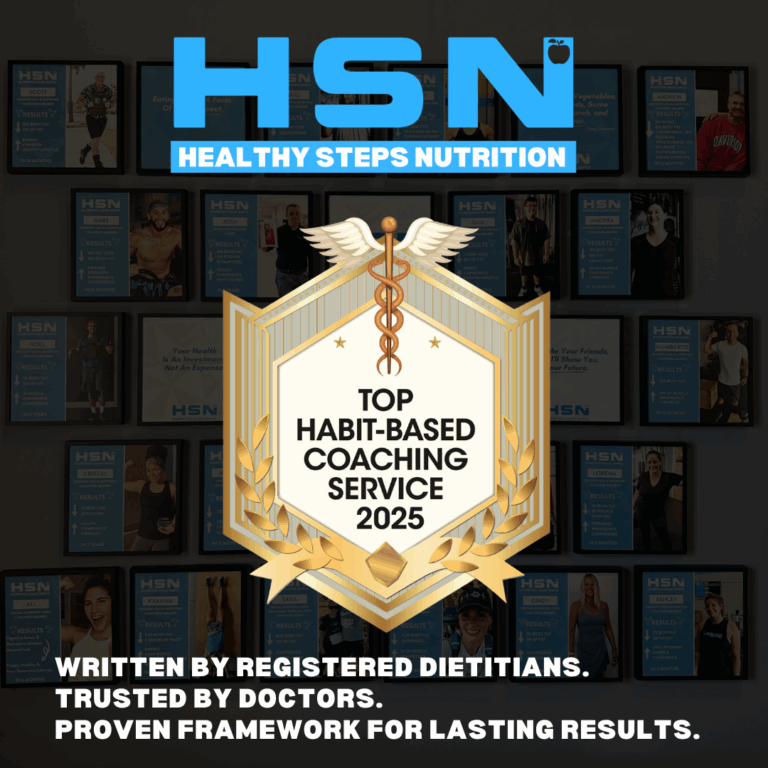If you are anything like me, summertime is one of the most challenging times to stay on track with nutrition and fitness. I start off having BIG goals. But then, halfway through the hot summer months, family life gets in the way, and I lose focus.
I love exercise but don’t love working out in the morning. The morning hours are for coffee, writing blogs, making nutrition content, and mentoring nutrition coaches and gym owners.
But, in the summer, if I don’t force a time to work out in the morning, it is challenging to achieve a workout in the afternoon. My kids are awake, they need to be driven every which way to Sunday, and my schedule is all over the place.
If you are reading this article that you can relate!
In this blog post, I will provide some tips for you (and me) to stay on track this summer. No more will we put the duties of motherhood and maintaining our house before taking care of our bodies.
Wellness is achievable in the summer if we put our minds to it!
Where To Start When Planning A Healthier Summer
When defining what staying on track looks like, looking at past behavior is important.
How did last summer go? At what point during the week do things start to get crazy? Did you put forth a good effort to maintain your health last year, or was there really no plan at all?
Complete a self assessment, and establish your baseline. It will be much easier to set achievable goals and define progress.
This step is a MUST DO!!!
Look at all the kids schedules for camps, sports etc. Also look at your work schedule if you work out side of the home. Download the dates and times into your calendar for these events plus your work, and don’t forget to include drive time.

When you complete this task, remind yourself that if the captain of the ship goes down, the entire ship will sink. You need to make time for yourself!
Now that we have our appointments all straight for the summer, we can get right into our top five tips!
Top 5 Tips For Staying On Track This Summer!

Tip #1 - Move More, Sit Less!
Add your workouts into your calendar just like you added the kids events and your work schedule. Saying you are going to get 4 days a week of exercise in vs actually getting it in are two different things. If you don’t plan ahead you will fail.
At Healthy Steps Nutrition, our goal is for our clients to aim for at least 30 minutes of exercise daily!
Now, if you are looking at your schedule and you can only fit in exercise 4 days of the week it’s ok. Make sure to block off an hour of time to make up for the other days you are unable to get in 30 minutes.
Remember that exercise doesn’t have to mean always going to the gym. Lifting weights is extremely important however, sometimes it just doesn’t workout. (no pun intended ) If you aren’t training for a performance sport, swimming, going for a walk, running, and body weight workouts are all great ways to get some movement in.
Getting out in the sun, with proper sun protection, is a great way to get some vitamin D, and boost your mood.
Tip #2 - Focus On A Balanced Plate

When we reference a balanced plate, we mean a meal that contains all three macronutrients; proteins, carbs and fats.
Sometimes it can be quite challenging to understand if a meal is balanced. That is why keeping it simple is extremely important. Using the plate method helps! The concept is that 1/2 of the plate is going to made up of non starch veggies, 1/4 of the plate will be made of a starch, and 1/4 of the plate will be protein. If there is little to no fat in your meat, then adding a thumb of fat in the form of dressing, butter, olive oil is also going to be necessary.
It’s important to remember, that even if you are trying to focus on weight loss, fat is something that people still need to be eating.

Tip #3 - Focus On Whole Foods First

Eat meats and veggies, nuts and seeds, some fruit, little starch and minimal added sugar. In doing so you will control the amount of processed food you consume thus reducing the amount of added sugar. Many people struggle with this because they think eating this way is boring or doesn’t taste good.
It doesn’t have to be this way! Our website has a ton of examples showing how to cook vegetables. Gone are the days when boiled mushy broccoli was a staple and mashed potatoes came from a box.
Check out some of our healthy recipes and pick to you could see yourself trying. And remember step #2, the plate method. Using the plate method really helps keep the focus on whole foods first.
Tip #4 - Rethink Your Drink

Did you know that sugar sweetened beverages are the leading source of added sugar in the American diet? Added sugars should be less than 10% of total calories consumed in a day. For example, if a person eats 2000 calories per day, then 200 calories or less should come from added sugars.
To put this in perspective, one can of soda contains about 10 teaspoons of added sugar. This means that one can of soda has approximately 155 calories from added sugar. Most teenagers and many adults drink 2-3 cans of soda daily. This level of consumption is concerning as an increase in added sugar correlates with many diseases including type 2 diabetes.
Consider a sugar free alternative to soda, Zevia. It uses stevia as a sweetener and comes in a variety of amazing flavors.
Another place adults are getting added sugar is through alcoholic beverages. Sugar in adult beverages accentuates the taste of the drink therefor making it more desirable. Because of this, people drink more alcohol and more sugar.
Many times people have no idea they are drinking the amount of sugar they are when consuming alcohol. Cocktail mixers are usually loaded with sugar, but often times don’t taste that way.
Consider alternatives with less sugar!
There are a ton of mocktail recipes made with very little sugar. Many companies now are making alcohol free spirits! That means you can have a margarita without the sugar or alcohol!
Make an effort to document the amount of added sugar you are consuming on a daily basis. Start by making some minor adjustments, if necessary to get back on track. Additionally, it’s important to stay hydrated. Be mindful of drinking water. A good rule of thumb to use is about 50% of your body weight as a minimum goal, or 60=80oz.
Tip #5 - Find Someone To Keep You Accountable

Staying on track is always easier with a buddy. Studies have shown you have a 65% chance of being successful if you tell someone about your goal. If you actually meet up with someone when working towards your goal, your chances of success rise to 95%.
Setting some expectations with your accountability buddy should be your first step. There are many ways to hold each other accountable.
Some examples are:
Exercise together
Meal prep a couple of recipes, and each person get 2 servings of each
Meet up at the grocery store to shop for healthy foods
Use each other for a sounding board when going to a restaurant and choosing what to eat
Wrap Up!
Routines may change during the summer! Knowing is half the battle, and using these tips can help you stay on track with prioritizing yourself and your health.
REMEMBER when the going gets tough, lean on your accountability partner for support with sticking to your set goals.





